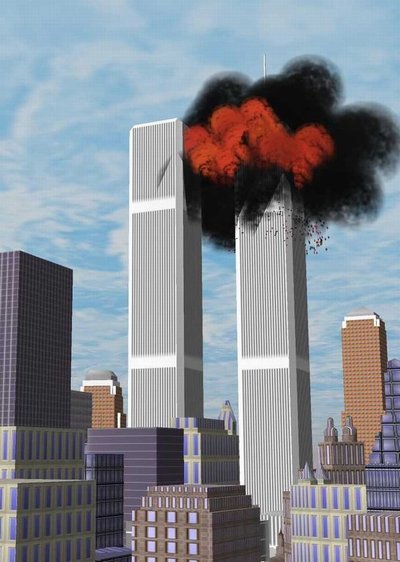September 9, 2003
Researchers turn to virtual reality to treat 9/11 post traumatic stress
A virtual reality researcher from the University of Washington and a Weill Cornell Medical College therapist have engaged the virtual world to treat victims of the Sept. 11 attack on the World Trade Center, and their regimen appears to be effective in helping patients cope with the severe psychological trauma of the event.
Hunter Hoffman, research scientist in the UW’s Human Interface Technology Laboratory in Seattle, and Dr. Joann Difede, assistant professor of psychiatry at Weill Cornell in New York, developed the computerized treatment for patients suffering from post-traumatic stress disorder, or PTSD. An initial case study published in the journal CyberPsychology described the treatment of a 26-year-old woman executive whose Sept. 11-related post-traumatic stress disorder wasn’t responding to traditional therapy that involved patients recounting their traumatic experiences to a therapist.
But after six weeks of virtual reality therapy, the woman showed a 90-percent reduction in symptoms of PTSD and an 83-percent reduction in symptoms of depression. Since then, several other people, including a New York City firefighter, have completed the virtual therapy with positive results.
The patients have all opted to remain anonymous.
“This is a story associated with a horrific event that has a happy ending, in that the treatment was successful,” said Hoffman. “The change for the people who complete the therapy is significant. There is an option for people who don’t respond to the usual treatment.”
In the therapy, patients wear a virtual reality helmet that uses two miniature monitor screens where goggles would be. The scenery changes as patients move their heads, effectively putting participants inside the virtual space.
The opening scene begins benignly, showing the twin towers of the World Trade Center. Patients watch as aircraft fly past, but not into, the structures. As the therapy progresses, the images become more graphic, re-creating the events of the terrorist attack. Airliners crash into the buildings, people jump to their deaths from the burning structures, and the buildings collapse in a violent roar followed by billowing dust clouds. Each scenario is first run in silence. Sounds – the whine of jet engines, crashes and screams – are gradually added as patients adjust after repeated exposure to earlier scenarios. A rumble pack that vibrates in the patients’ chair completes the effect.
The patient featured in the case study worked in a large financial institution located near the World Trade Center and experienced firsthand much of that day’s horror. Before treatment, she showed symptoms that included irritability and emotional outbursts, depression, difficulty sleeping, and she avoided all thoughts relating to the day’s trauma.
Through treatment, the patient was able to recall the events of Sept. 11 with much greater detail and without the associated terror, the researchers found. According to the case study, after viewing the first image of the virtual twin towers, the patient began to cry. She then described in detail her memory of watching the second plane hit the south tower, her escape through dust and debris, and a harrowing encounter with a severely injured woman whom she was unable to help. And for the first time since the ordeal began, she was able to remember believing that she would die.
One of the major virtues of the virtual process, according to Hoffman, is that it helps patients revisit their experiences in a safe, controlled environment.
“The illusion of being back at the World Trade Center on Sept. 11 helps patients gradually access emotionally laden memories they have been avoiding thinking about,” he said.
This isn’t the first venture into virtual reality therapy for Hoffman, who, with programmers Howard Abrams and Duff Hendrickson, created the Sept. 11 virtual world with funding from the Paul Allen Foundation for Medical Research. He has also created virtual worlds to successfully treat patients with spider phobia and to help distract burn victims from their extreme pain during burn wound care and physical therapy.
The Sept. 11 therapy and VR equipment is supported by Pfizer Inc., the National Institutes of Health and Dell Computers.
###
For more information, contact Hoffman at (206) 616-1496 or hunter@hitl.washington.edu.
For a copy of the case study that appeared in CyberPsychology, point your Web browser to
http://www.hitl.washington.edu/people/hunter/wtcbrenda.pdf. A video sample of the program can be seen at http://www.hitl.washington.edu/research/burn/WTC/wtc_cin.avi
High-resolution color images from the program are available at: http://www.washington.edu/newsroom/news/images/tcvr1.jpg and
http://www.washington.edu/newsroom/news/images/tcvr2.jpg
Required photo credit: Hunter Hoffman, University of Washington.



